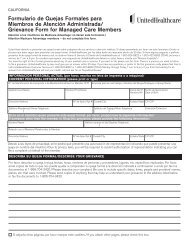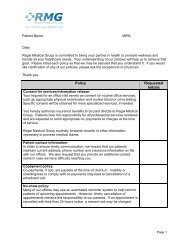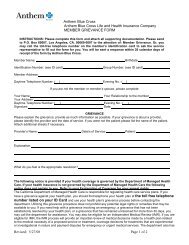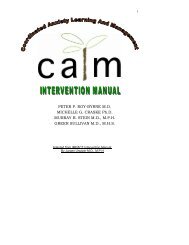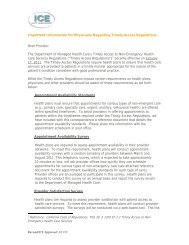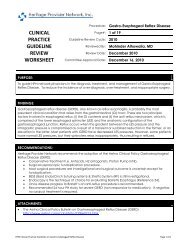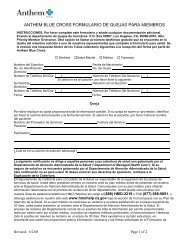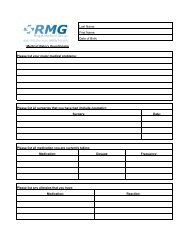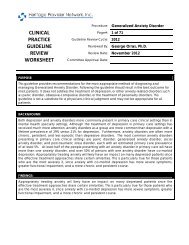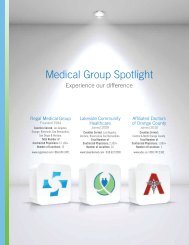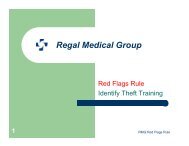Guide to Clinical Preventive Services 2012 - Agency for Healthcare ...
Guide to Clinical Preventive Services 2012 - Agency for Healthcare ...
Guide to Clinical Preventive Services 2012 - Agency for Healthcare ...
Create successful ePaper yourself
Turn your PDF publications into a flip-book with our unique Google optimized e-Paper software.
SCREENING FOR TYPE 2 DIABETES MELLITUS IN ADULTSCLINICAL SUMMARY OF U.S. PREVENTIVE SERVICES TASK FORCE RECOMMENDATIONPopulationAsymp<strong>to</strong>matic adults with sustained blood pressure greaterthan 135/80 mm HgAsymp<strong>to</strong>matic adults with sustained blood pressure 135/80mm Hg or lowerScreen <strong>for</strong> type 2 diabetes mellitus.RecommendationGrade: BNo recommendation.Grade: I (Insufficient Evidence)These recommendations apply <strong>to</strong> adults with no symp<strong>to</strong>ms of type 2 diabetes mellitus or evidence of possible complications of diabetes.Risk AssessmentBlood pressure measurement is an important predic<strong>to</strong>r of cardiovascular complications in people with type 2 diabetes mellitus.The first step in applying this recommendation should be measurement of blood pressure (BP).Adults with treated or untreated BP >135/80 mm Hg should be screened <strong>for</strong> diabetes.Three tests have been used <strong>to</strong> screen <strong>for</strong> diabetes:● ● Fasting plasma glucose (FPG).Screening Tests● ● 2-hour postload plasma.● ● Hemoglobin A1c.The American Diabetes Association (ADA) recommends screening with FPG, defines diabetes as FPG ≥ 126 mg/dL, and recommendsconfirmation with a repeated screening test on a separate day.Screening Intervals The optimal screening interval is not known. The ADA, on the basis of expert opinion, recommends an interval of every 3 years.Suggestions <strong>for</strong> practice regardinginsufficient evidenceWhen BP is ≤ 135/80 mm Hg, screening may be considered on an individual basis when knowledge of diabetes status would help in<strong>for</strong>mdecisions about coronary heart disease (CHD) preventive strategies, including consideration of lipid-lowering agents or aspirin.To determine whether screening would be helpful on an individual basis, in<strong>for</strong>mation about 10-year CHD risk must be considered. Forexample, if CHD risk without diabetes was 17% and risk with diabetes was >20%, screening <strong>for</strong> diabetes would be helpful becausediabetes status would determine lipid treatment. In contrast, if risk without diabetes was 10% and risk with diabetes was 15%, screeningwould not affect the decision <strong>to</strong> use lipid-lowering treatment.Other relevant in<strong>for</strong>mation from theUSPSTF and the Community <strong>Preventive</strong><strong>Services</strong> Task ForceEvidence and USPSTF recommendations regarding blood pressure, diet, physical activity, and obesity are available athttp://www.uspreventiveservicestask<strong>for</strong>ce.org.The reviews and recommendations of the Community <strong>Preventive</strong> <strong>Services</strong> Task Force may be found athttp://www.thecommunityguide.org.For a summary of the evidence systematically reviewed in making these recommendations, the full recommendation statement, and supporting documents, please go <strong>to</strong>http://www.uspreventiveservicestask<strong>for</strong>ce.org.25




